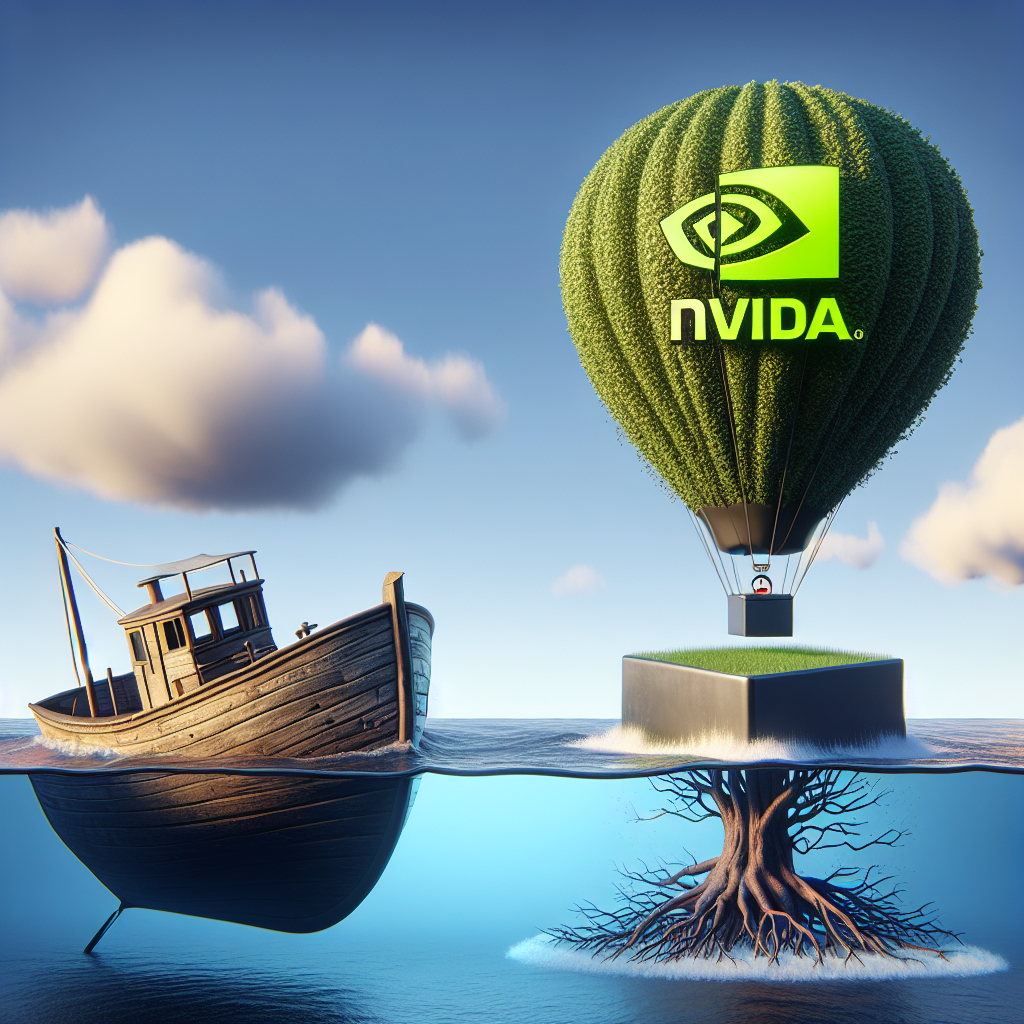How Nvidia Booting Intel from the Dow Could Break a Proven Stock-Trading Strategy
The Implications of Nvidia’s Rise and Intel’s Fall
Earlier this month, Nvidia (NVDA) replaced Intel (INTC) in the Dow Jones Industrial Average (DJIA), generating significant discussion among investors about what this shift signifies in the world of finance and stock trading. This change raises fascinating questions not only about the performance of both companies but also about traditional market patterns that define investment strategies.
The Historical Context: The Deletion Effect
Research from market analyst Research Affiliates sheds light on an intriguing phenomenon dubbed the “deletion effect.” Historical data demonstrates that between 1991 and 2023, stocks removed from major indexes, including the Dow, have significantly outperformed their replacements. In fact, a hypothetical portfolio consisting solely of deleted stocks would have made investors 74 times wealthier than those who invested in constant market alternatives. This is not an isolated trend; Pomona College’s comprehensive study covering 1928 to 2005 indicated that stocks deleted from the Dow outperformed their replacements in 32 out of 50 instances.
On the average, deleted stocks recorded a remarkable 19.3% increase in value within 250 trading days post-removal, while newly added stocks managed a modest 3.37% gain over the same period. By the end of the fifth year, deleted stocks multiplied by a factor of 2.73, whereas the new additions grew by only 1.65 times their initial value.
A prime historical example of the deletion effect at work is IBM’s removal from the Dow in 1939, when the index replaced it with AT&T (T). This decision proved detrimental, as IBM’s stock saw a staggering increase of 562 times its initial value by the time it made its return to the index in 1979, while AT&T’s stock only tripled in value.
Understanding the Drivers Behind Deletion Performance
According to Research Affiliates, two primary factors drive the counterintuitive success of deleted stocks:
1. **Long-Horizon Mean Reversion**: Companies are often removed from indexes at their nadir, paving the way for a significant recovery in value.
2. **The Liquidity Effect**: The forced selling induced by the removal from the index can drag these stocks below their fundamental values, leading to potential upside as the market corrects.
Overall, deleted stocks have exhibited a consistent pattern of outperformance. Research suggests that they outperform the Russell 2000 Value Index by more than 18% on average, and in 2009, they exceeded their benchmark by a staggering 90%. Even in years of underperformance, the average shortfall remains a modest 5.3%.
A New Era of Tech Volatility
However, the reliability of this deletion pattern may be waning, particularly since 2005, where deletions have only outperformed in four of 14 cases. For instance, a $10,000 investment in all Dow deletions would have grown to $180,609, whereas investments in Dow additions would have reached $227,540.
The rapid pace of technological change appears to be a significant driving force behind this shift. Nvidia’s journey from $22.3 billion in May 2016 to a staggering $3.6 trillion today epitomizes this transformation. With a commanding 70%-95% share of the AI chip market, Nvidia’s ascent casts a long shadow over Intel, which has seen its CPU market share fall to 62%, allowing rival AMD (AMD) to seize a record 35.5% share.
Redefining Market Leadership
The swift evolution of the semiconductor industry implies that traditional frameworks for market leadership may no longer be applicable. Unlike the industrial giants of the past that maintained their status through scale and manufacturing capacity, today’s tech landscape demands agility and innovation. A company can plummet from its leadership position almost overnight, and conversely, when it rises, it does so with newfound power and longevity.
Nvidia’s CUDA platform exemplifies this shift: once developers start building on a company’s technology, switching to a competitor becomes increasingly difficult, creating a self-reinforcing ecosystem.
The Investors’ Dilemma
For investors witnessing the Nvidia-Intel transition, the decision-making landscape is complex. The historical deletion effect suggests Intel should experience an uptick based on past performance trends, especially since the company still has robust manufacturing capabilities and a strong stake in CPUs. However, Nvidia’s lead in AI suggests that traditional principles of mean reversion may not hold in this rapidly changing context.
The most insightful takeaway from this switch may not be whether Intel will experience the deletion effect, but rather whether the conventional metrics of market leadership—including Dow membership—remain relevant in an era where artificial intelligence is redefining the rules of investment and value creation at breakneck speed.
In conclusion, the changing tide symbolized by Nvidia’s rise and Intel’s fall may serve as a wake-up call for analysts and investors alike, prompting a necessary reevaluation of investment strategies and market dynamics in this new economic age.
